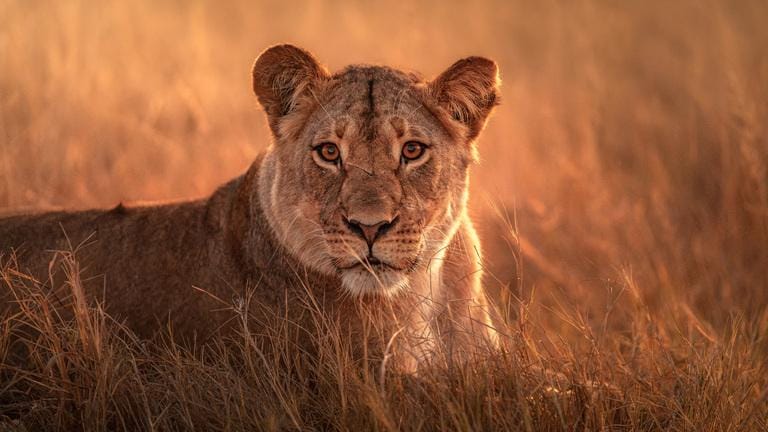Summary
- Africa hosts over 1,100 mammal species and 2,600 bird species, many of which are found nowhere else on Earth. Around 14% of Africa’s land is under formal protection, covering national parks, reserves, and conservancies.
- Wildlife-based tourism contributes billions of dollars to African economies, with countries like Kenya, Botswana, and Tanzania leading in safari tourism.
- Community-led conservation is on the rise, with countries like Namibia and Zimbabwe pioneering programs that involve local populations in wildlife protection.
Deep Dive!!!
Wildlife conservation in Africa is more than just protecting animals—it’s about preserving the continent’s natural heritage, sustaining ecosystems, and supporting millions of people who depend on nature-based tourism. Despite economic and political challenges, some African nations have demonstrated remarkable dedication to conserving their wildlife, making them global leaders in conservation efforts.
A key measure of conservation success is the Megafauna Conservation Index (MCI), developed by researchers from the University of Pretoria. This index evaluates countries based on three key factors: the proportion of land occupied by large wildlife species, the percentage of that land under strict protection, and financial contributions to conservation efforts. The results are surprising—some of the best-performing countries are not the wealthiest, proving that conservation is a matter of priority, not just resources.
10. Mozambique
Photo Credit: https://images.app.goo.gl/gRdUfStw45U94h7G8
After years of civil war that devastated its wildlife, Mozambique has made a strong comeback in conservation. The revival of Gorongosa National Park is one of Africa’s greatest success stories, with elephants, lions, and wild dogs thriving again. Mozambique also collaborates with neighboring nations on transfrontier conservation areas, ensuring wildlife can roam freely across borders.
9. Malawi
Photo Credit: https://images.app.goo.gl/zWHV5Z1bRUbxwgeQ6
Despite its small size, Malawi has become a conservation success story thanks to partnerships with organizations like African Parks. Through careful management, depleted reserves like Majete and Liwonde National Parks have been transformed into thriving ecosystems. The country’s rewilding efforts have led to the successful reintroduction of lions, cheetahs, and black rhinos.
8. Kenya
Photo Credit: https://images.app.goo.gl/wN7TcQMvrUFV6rw68
Kenya has long been at the forefront of African conservation, pioneering initiatives such as drone surveillance and GPS tracking to protect its wildlife. The Ol Pejeta Conservancy is home to the last two northern white rhinos, while Maasai Mara and Amboseli National Parks support some of Africa’s most famous elephant and lion populations. The country also leads in developing wildlife corridors to combat habitat fragmentation.
7. Rwanda
Photo Credit: https://images.app.goo.gl/KKcL5BL767FtcYbg7
Rwanda’s conservation efforts have led to a remarkable recovery in mountain gorilla populations, drawing global attention. The government has made gorilla tourism a central part of its conservation strategy, reinvesting profits into protecting the Volcanoes National Park. Beyond gorillas, Rwanda is expanding its conservation focus to include biodiversity hotspots like Nyungwe Forest.
6. Zambia
Photo Credit: https://images.app.goo.gl/WDJB2UsRoX3ziYKn6
Zambia is known for its vast wilderness areas, including South Luangwa and Kafue National Parks, where wildlife flourishes under strict anti-poaching measures. The country’s conservation model links wildlife protection with poverty reduction, ensuring that local communities benefit from tourism revenue, thereby fostering long-term conservation support.
5. Central African Republic
Photo Credit: https://images.app.goo.gl/bWayCmdKCxRfcKBx9
Despite political instability, the Dzanga-Sangha Protected Areas in the Central African Republic remain a critical sanctuary for forest elephants, gorillas, and chimpanzees. International partnerships help sustain conservation efforts here, proving that even in challenging conditions, wildlife protection is possible.
4. Zimbabwe
Photo Credit: https://images.app.goo.gl/DT2gdzKe41HzJ6De8
Zimbabwe is known for its CAMPFIRE program, one of Africa’s most successful community-based conservation models. By involving local communities in wildlife management, the country has reduced poaching and improved conservation outcomes. National parks like Hwange and Mana Pools remain strongholds for elephants, lions, and painted wolves.
3. Tanzania
Photo Credit: https://images.app.goo.gl/NqDUfyLTRTxN3i4e9
Tanzania boasts some of Africa’s most iconic wildlife destinations, including the Serengeti and Ngorongoro Crater, where the world’s largest annual migration of wildebeest and zebras takes place. The country’s conservation policies emphasize sustainable tourism and habitat preservation, making it a leader in large-scale conservation planning.
2. Namibia
Photo Credit: https://images.app.goo.gl/EQM1qVjNrRKN8Qi89
Namibia is the first African nation to include environmental protection in its constitution. Its community conservancy program covers over 20% of the country, empowering local communities to manage and protect wildlife. This approach has led to a significant increase in black rhino, cheetah, and desert elephant populations.
1. Botswana
Photo Credit: https://images.app.goo.gl/1QvQwMmCV7jyjLeJA
With over 25% of its land dedicated to protected areas, Botswana is Africa’s leading conservation nation. The country is home to the largest elephant population on the continent and boasts renowned conservation areas like the Okavango Delta and Chobe National Park. Strict anti-poaching laws and sustainable ecotourism policies make Botswana a global model for wildlife conservation.

